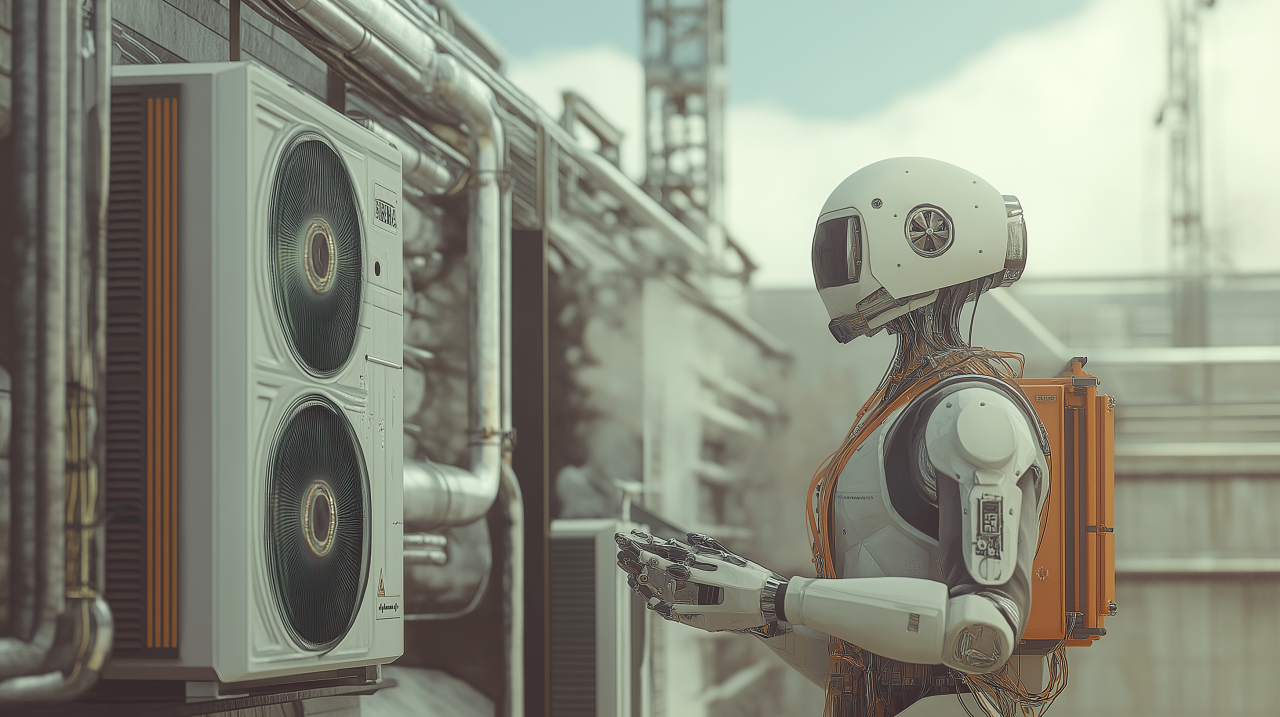In the ever-evolving world of technology, thermal imaging AI for HVAC systems stands out as a groundbreaking innovation. As industries strive for increased efficiency and reduced costs, this technology is proving to be a game-changer. By integrating artificial intelligence with thermal imaging, HVAC systems are becoming more intelligent, adaptable, and efficient. This article delves into the intricacies of this technology, exploring how it is transforming the HVAC landscape.

Understanding Thermal Imaging AI
Thermal imaging AI combines thermal imaging technology with artificial intelligence to provide enhanced monitoring and diagnostics for HVAC systems. Thermal imaging detects heat patterns and variations, while AI analyzes this data to identify potential issues, optimize performance, and predict maintenance needs.
The Role of AI in HVAC Systems
AI’s role in HVAC systems is multifaceted. It enhances system diagnostics, improves energy efficiency, and predicts maintenance needs. By analyzing data from thermal imaging, AI can identify inefficiencies and suggest adjustments to optimize system performance, leading to significant energy savings.
Enhancing System Diagnostics
Traditional HVAC diagnostics often rely on manual inspections, which can be time-consuming and prone to error. AI-driven diagnostics use thermal imaging data to provide real-time insights into system performance, enabling quicker and more accurate identification of issues.
Improving Energy Efficiency
Energy efficiency is a primary concern for HVAC systems. AI analyzes thermal imaging data to optimize system settings, reducing energy consumption without compromising comfort. This not only lowers energy bills but also reduces the environmental impact of HVAC systems.
Predicting Maintenance Needs
Regular maintenance is crucial for HVAC systems to function optimally. AI uses thermal imaging data to predict when maintenance is needed, preventing costly breakdowns and extending the lifespan of the system. This proactive approach to maintenance ensures systems are always operating at peak efficiency.
Applications of Thermal Imaging AI in HVAC Systems
Thermal imaging AI is being applied in various ways to enhance the performance of HVAC systems. From improving air quality to ensuring system reliability, its applications are vast and impactful.
Improving Air Quality
Indoor air quality is a critical factor in maintaining a healthy environment. AI-driven systems use thermal imaging to monitor air quality and adjust HVAC settings accordingly, ensuring optimal air quality at all times.
Ensuring System Reliability
System reliability is crucial for the uninterrupted operation of HVAC systems. By continuously monitoring system performance through thermal imaging, AI can quickly detect and address potential issues, ensuring reliable operation.
Benefits of Thermal Imaging AI for HVAC Systems
The benefits of integrating thermal imaging AI into HVAC systems are numerous. From increased efficiency to cost savings, this technology offers significant advantages.
Increased Efficiency
By optimizing system performance, thermal imaging AI significantly increases the efficiency of HVAC systems. This leads to reduced energy consumption and lower operating costs.
Cost Savings
Cost savings are a major benefit of thermal imaging AI. By preventing costly breakdowns and optimizing energy use, this technology reduces overall operating costs for HVAC systems.
Improved Comfort
Comfort is a key consideration for HVAC systems. AI-driven systems ensure optimal comfort levels by continuously monitoring and adjusting system settings based on real-time data.
Challenges and Considerations
While the benefits are clear, there are challenges and considerations to keep in mind when implementing thermal imaging AI in HVAC systems.
Data Privacy Concerns
Data privacy is a major concern with AI-driven systems. Ensuring that data is collected and used responsibly is crucial for maintaining user trust and compliance with regulations.
Implementation Costs
Implementing thermal imaging AI can be costly. However, the long-term benefits and cost savings often outweigh the initial investment.
Technical Expertise
Technical expertise is required to implement and maintain AI-driven HVAC systems. Ensuring that staff are adequately trained is essential for successful implementation.
The Future of Thermal Imaging AI in HVAC Systems
The future of thermal imaging AI in HVAC systems is bright. As technology continues to evolve, these systems will become even more efficient, adaptable, and intelligent.
Advancements in AI Technology
Advancements in AI technology will lead to even more sophisticated HVAC systems. With improved algorithms and data analysis, these systems will offer enhanced performance and efficiency.
Integration with Smart Home Systems
Integration with smart home systems is a promising area of development. By connecting HVAC systems with other smart devices, users can enjoy a more seamless and personalized experience.
Increased Adoption
As the benefits of thermal imaging AI become more widely recognized, adoption of this technology is expected to increase. This will lead to more efficient and sustainable HVAC systems across various industries.
Conclusion
In conclusion, thermal imaging AI for HVAC systems is a transformative technology that offers numerous benefits. By enhancing efficiency, reducing costs, and improving comfort, this technology is set to revolutionize the HVAC industry. As technology continues to advance, the potential for thermal imaging AI in HVAC systems is limitless.

FAQs
What is thermal imaging AI?
Thermal imaging AI is a technology that combines thermal imaging with artificial intelligence to enhance monitoring and diagnostics in various applications, including HVAC systems.
How does thermal imaging AI benefit HVAC systems?
Thermal imaging AI benefits HVAC systems by improving diagnostics, increasing energy efficiency, and predicting maintenance needs, leading to cost savings and enhanced performance.
What are the challenges of implementing thermal imaging AI?
Challenges include data privacy concerns, implementation costs, and the need for technical expertise to successfully integrate and maintain AI-driven systems.
This article contains affiliate links. We may earn a commission at no extra cost to you.
